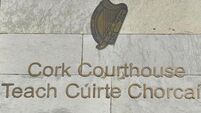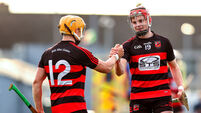Clodagh Finn: Farewell Paddy and take the stereotypes with you


Is it not about time to wave goodbye to the paddywhackery and stereotypes and write a new story that reflects who we are on our national day, asks Clodagh Finn.
I HAD imagined St Patrick’s Day differently. And I don’t mean the widespread cancellation of parades. I had secretly hoped we would be watching Taoiseach Mary Lou travel to Washington with a bowl of shamrock.
I would have given anything for a ringside seat to see the Sinn Féin leader meet the US president. A meeting of the green and the orange, if you like.
Whatever your political leanings, you have to admit a Mary Lou/Donald Trump encounter would blast a badly needed breath of fresh air into the usual fustiness and deadening platitudes of March 17.
Alas, for now, we can only imagine the effect her no-nonsense forthrightness might have had on the assembled worthies at the White House, but we are still free to reimagine the Irish national holiday at home.
It still disappoints me to see the kind of festive tat that fills the shelves of our supermarkets at this time of year. And I say that as a fan of kitsch. The one upside of the coronavirus is that the leprechauns and shamrockery mightn’t be as visible this year, but the national stereotypes prevail.
Does anybody else feel their heart sink when the paddywhackery of March gets into gear?
Things have shifted a little. Parades are much less militaristic these days, opting instead to represent our great little nation in all its complicated splendour. And often with great humour.

Thank heavens for Macnas, too. The Galway-based masters of storytelling and spectacle have transformed many a St Patrick’s Day parade into a “playground of imagination”, to use their own words.
The adjectives that come to mind when describing the theatre company include innovative, colourful, wild, bold, vivid, diverse; words that could also describe our country. Or, at least, parts of it. Yet, they are not often words that generally apply to our celebration of St Patrick’s Day.
Or indeed, its celebration abroad.
This year, some 500 international monuments will be lit up green as part of the 10th Global Greening initiative which, in part, is designed to celebrate the 70m or so people who claim Irish heritage.
Nobody is going to argue with a bit of good publicity, or a bit of good fun. And you have to say that there is something surreal in knowing that a giant beaver sculpture in Beaverstown, Canada, is going to glow green this year, as is the Smurf statue in Brussels and a kissing couple in Amsterdam.
Let’s hope that will put a further dent in the lingering image of the drunken, garrulous Gael who lives in a lush, green land.
That most Irish of colours, green, is interesting in itself. If you go on a tour of the wonderful Little Museum of Dublin, the guide will tell you that blue was initially the colour associated with St Patrick.
That association may well be quite recent — and Anglo-Irish — but if you go back further you’ll find references to some of our mythical forebears who wore blue, as well as details of an old Irish royal crest that was blue as well as green.
Indeed, the coat of arms of Ireland features a gold harp on a blue background.
Colours are of little importance really except, sadly, when used on flags and other regalia to inflame and divide. The point is that when you scratch the surface, a more nuanced story of our national identity starts to emerge.
If you want to get an idea of what that might look like, visit the Dúchas project (duchas.ie), which has been working to digitise the many gems contained in the National Folklore Collection.
One of the most fascinating reads is the remarkable Schools’ Collection from 1937, a project that asked all senior primary schoolchildren in the State to tell the stories of their locality.
More than 750,000 pages of local history and oral tradition from across the 26 counties were recorded in a scheme run by the Department of Education and the Irish National Teachers’ Organisation.
In some cases, the children’s original school exercise books are digitised and you can read accounts of everything from local heroes and apparitions to local cures, prayers, recipes, and riddles.
Sample riddle: What is as round as an apple, as deep as a cup and all the men in Derry wouldn’t lift it up?
Answer: A well.
For the weekend that is in it, take a look at the stories about St Patrick. There are several, many of which I had never heard before.
In one, our national saint rides a white horse. In another, he tames a wild bull, and, in one rather gruesome account, he is served dog flesh by a local chieftain but brings the animal back to life. It stood up and even barked, we’re told. St Patrick, though, was furious and left the townland, cursing its inhabitants.
Many of the stories paint a picture of a rather vengeful national saint but it goes to show that the national narrative is far more nuanced — and interesting — than we allow it to be.

Perhaps the time has come to start another Schools’ Collection and ask children to record the stories inspired by their own localities.
This time, we might make it a 32-county project and gather the lore, tradition, beliefs and stories of a modern Ireland so that we have a real snapshot of our times. A day in the life of Ireland in 2020.
The stories that emerged from Ireland 80 years are not just fascinating. Many of them would be lost to us if they hadn’t been committed to paper. Fast-forward another 80 years and the same will happen again unless we take action.
So, this St Patrick’s Day, why not start thinking of the story you would like to add to the national narrative. Ask around.
Canvass relatives and neighbours and dig deep, because it’s time to wave goodbye to the paddywhackery and stereotypes and write a new story that reflects who we really are.












